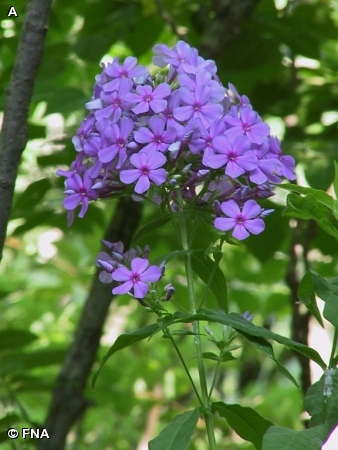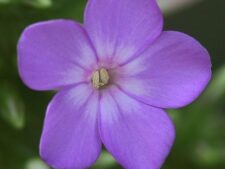
This perennial has an erect, 2-6 foot tall stem. The leaves are broadly lance shaped and opposite on the stem (A). The trumpet-shaped flowers have 5 lobes; they form a pyramidal cluster. They are usually deep lavender, but may also be white to pink. Identified by flowering period; it blooms much later than the similar Timber Phlox (Phlox divaricata) and Prairie Phlox (Phlox pilosa).
Grows in woodlands, flowering from July through September. In Fontenelle Forest, rare; one colony was found off Camp Gifford Road. At Neale Woods, rare; one colony at MRE trailhead.
These flowers must have escaped from cultivation, because eastern Nebraska is west of their natural range. Also known as Garden Phlox.
The content of NatureSearch is provided by dedicated volunteer Naturalists of Fontenelle Forest who strive to provide the most accurate information available. Contributors of the images retain their copyrights. The point of contact for this page is: Roland Barth.

